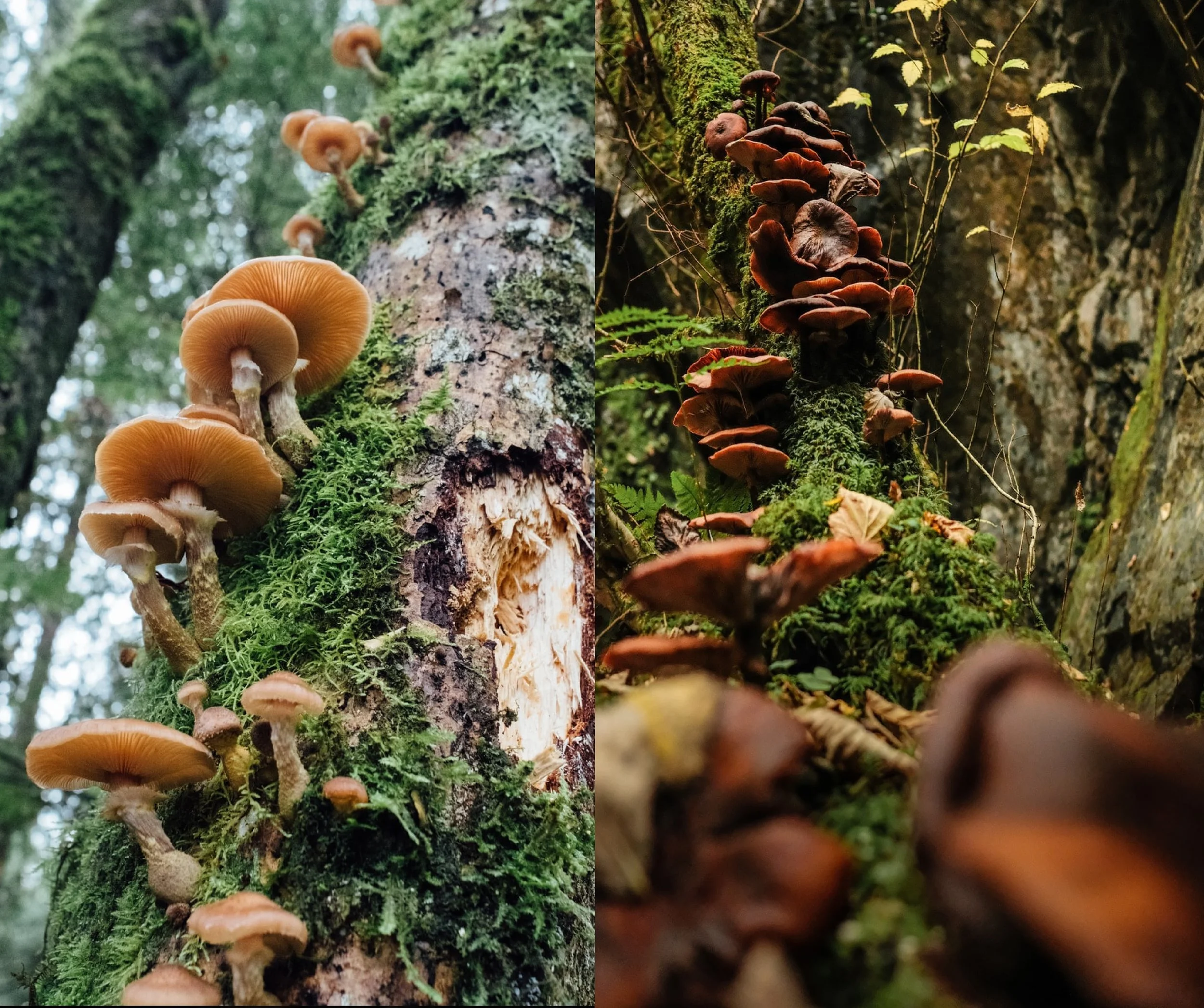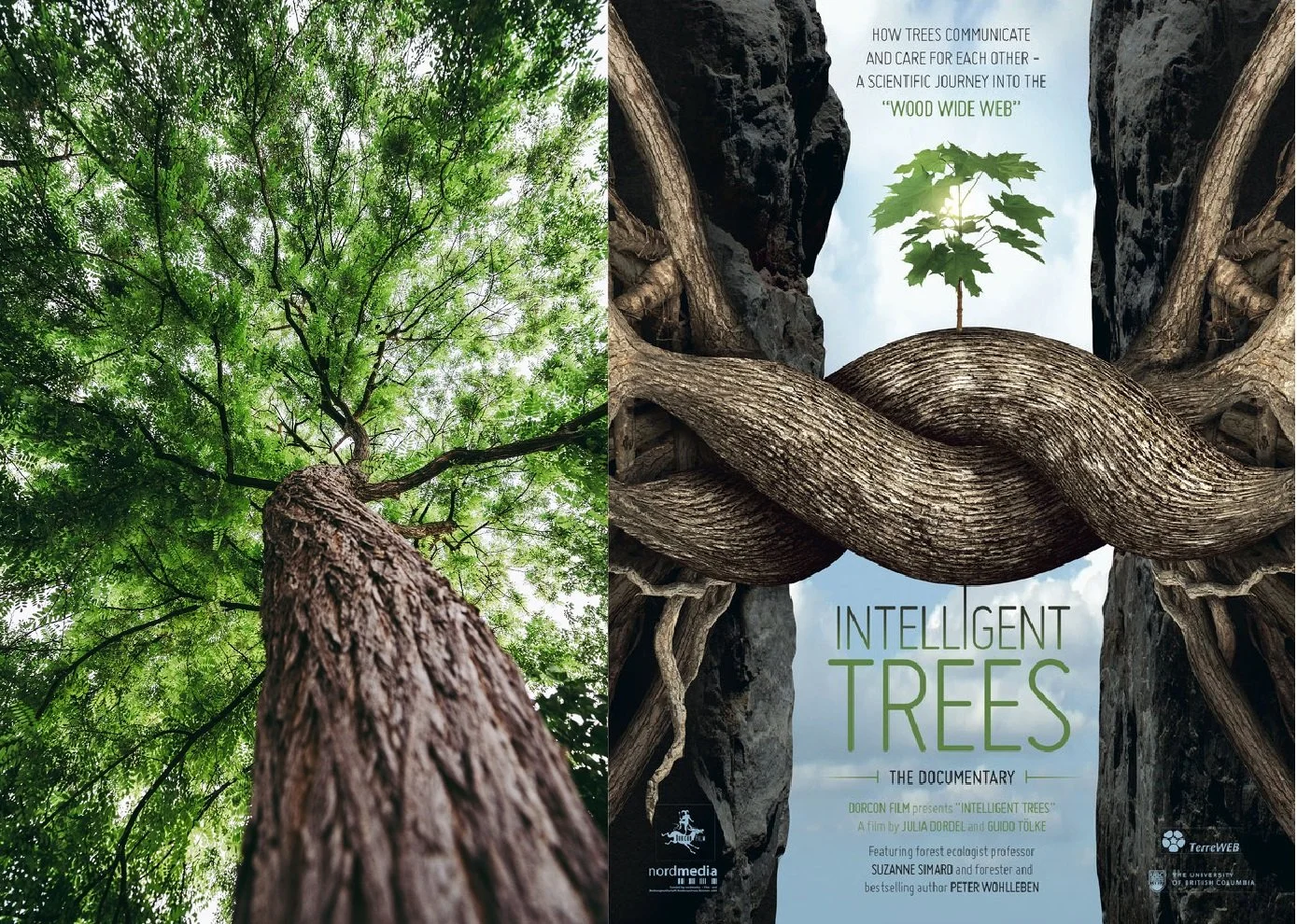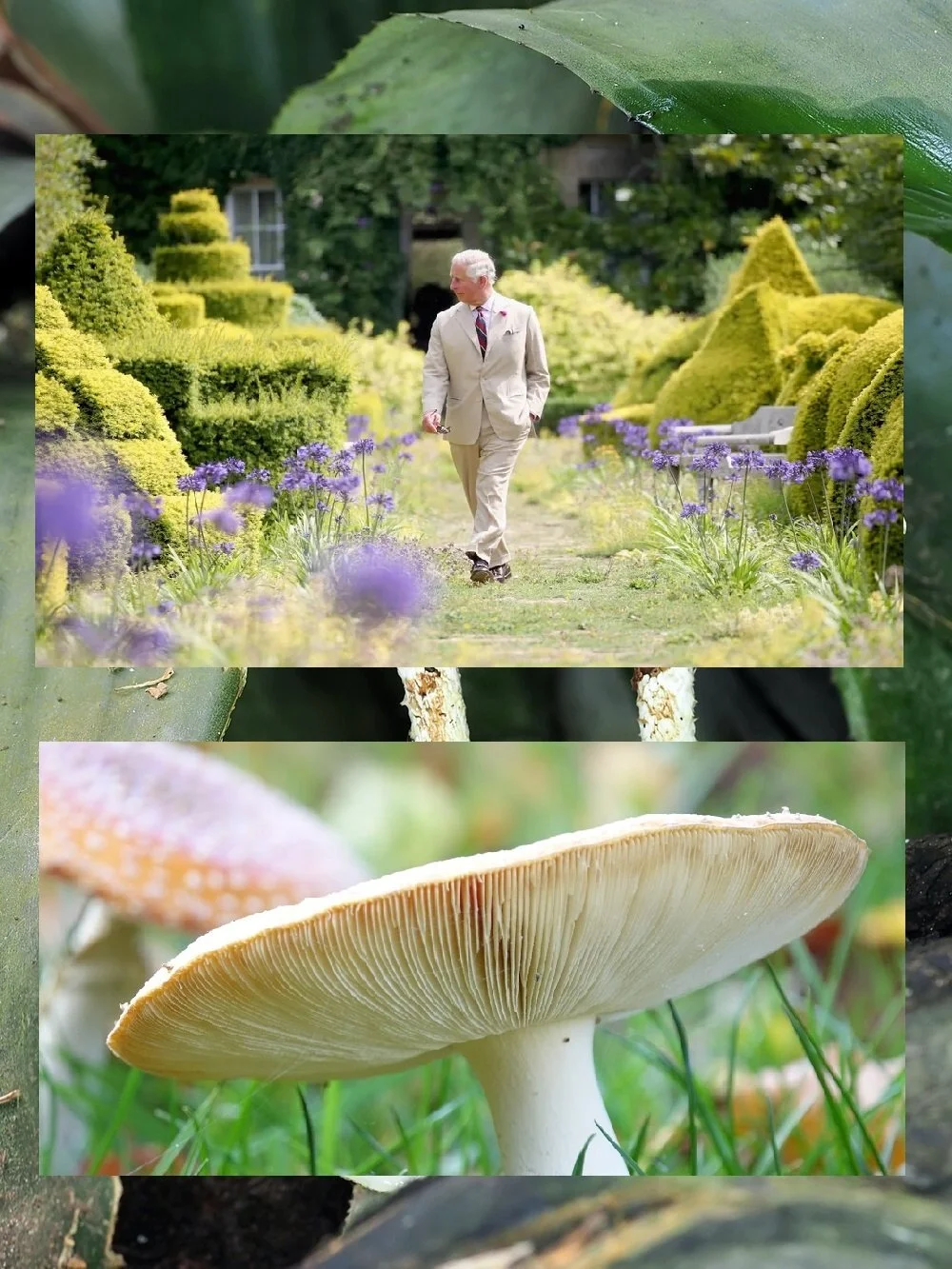Is Mycelium the Connective Tissue of Nature's Global Communication Network?
/Are humans on the precipice of having scientific confirmation of "mushroom intelligence"? Such vetted research does not exist presently. But new research by Andrew Adamatzky, a computer scientist at the Unconventional Computing Laboratory of the University of the West of England, is provocative in raising a series of questions about intelligent life in the world of fungi.
The Woodwide Web
Indications of 'Earth's natural internet' date back to the 1885 when the German botanist and mycologist Albert Bernhard Frank coined the term "mycorrhiza". The mycorrhizae [plural of a single cell mycorrhiza] exist as miniscule, amost microscopic threads called hyphae. These hyphae branch into a complicated web or patchwork called mycelium.
In the words of The National Forest Foundation: "Taken together, myecelium composes what’s called a “mycorrhizal network,” which connects individual plants together to transfer water, nitrogen, carbon and other minerals. German forester Peter Wohlleben dubbed this symbiotic network affecting about 90 percent of plant life on the planet -- including trees -- the “woodwide web.” It is through the mycelium that trees 'communicate.'
Botanists and mycologists have understood this grand symbiotic relationship between fungi and plants for over a century. But positing the existence of a linguistic communication system founded on 'intelligence' is another subject entirely.
"The Secret Life of Plants"
Almost 50 years ago, Peter Tompkins and Christopher Bird published in 1973 their mindbending book "The Secret Life of Plants", described as "a fascinating account of the physical, emotional, and spiritual relations between plants and man."
Reissued and updated in March, 1989, the title -- called "beloved" 16 years after its initial publication date -- cast fresh eyes on the "rich psychic universe of plants", as it explored plants' responses to human care and nurturing, plants' surprising reaction to music, their lie-detection abilities, their creative powers and much more.
"The Secret Life of Plants" affirmed the deep ties that humanity has with nature -- even when we disregard its importance in our lives through our actions. Most humans take the natural world for granted, as if it will always exist at our disposal to inspire our senses, grow food for our stomachs, and regulate temperatures on earth.
We do not consider this relationship tenuous, inspiring us to act with care with plants and their own lives, so that we do not perish as a species.
Decades of research, since Tompkins and Bird shared their account of the special relationship between humans and plants, has confirmed their central thesis about interactions between humans and plants.
Prince Charles, Champion of Plant Communications
In 1986 England's Prince Charles explained how talking to his plants helped them grow. Ridiculed, the prince held his ground, affirming his private conversations in 2010, saying "I happily talk to plants and trees and listen to them. I think it's absolutely crucial."
In a spring 2022 BBC1 'The Green Planet' series about the plant world, Sir David Attenborough says that Charles will feel "pretty vindicated because he was ahead of the game." The landmark series shows how plants can think and communicate with each other -- and also respond to human interaction as well.
In one episode, viewers see trees in British forests communicating using fungi networks which connect to their roots.
Stella McCartney Gives Fungi the Fashion and Also Spiritual Spotlight
Fungi have been front and center in spring 2022, thanks to fashion designer Stella McCartney. A decades-long vegetarian and animal welfare activist, McCartney's interest and knowledge competency about the world of mycelium, has grown far beyond her initial interest in developing a vegan alternative to leather.
Stella McCartney has delved deeply into the world of mycelium in her development and commercial work with Bolt Threads Mylo sustainable leather.
As Stella's own mushroom knowledge grew far beyond its original boundaries, the designer not only inspired us to study the world of fungi and mycelium. A McCartney and not a Medici, Stella nevertheless became a Renaissance-style patron of fungi education and learning.
With each new discovery, Stella's own eyes opened wider in amazement, and she has shared this knowledge with the entire world, helping to create a mushroom frenzy that is only taking shape after decades of neglect, misinformed derision and bad laws.
Andrew Adamtzky's Research
Within this quest for more scientific knowledge about fungi, Andrew Adamatzky employed tiny electrodes to record the rhythmic electrical impulses transmitted across the mycelium of four different species of fungi.
These impulses created measurable patterns of amplitude, frequency and duration that when diagrammed bore a striking resemblence to mathematical schematics of human speech. Adamatzky believes that he may have discovered the foundation of a fungal language of about 50 words that are also organized into sentences.
The complexity of the possible 'language' used by different fungi species varied, with the split gill fungus [Schizophyllum commune] using the most complicated communication of those tested.
The possibility that fungi have their own electrical language to communicate information about both opportunity and resources nearby, and also danger, could signal a vast underground intelligence network that covers much of the globe.
Prior research has shown that when one plant is under attack with disease, it communicates to nearby plants about the problem. In some studies, it appears that plants, including trees, can transfer carbon-based compounds such as sugars to their neighbors.
Exactly how these communication networks work, and the role of fungal mycelia in creating a transmission system is not understood. Adamatsky and partner researchers concluded: "What we can take from the research is that electrical spikes are, potentially, a new mechanism for transmitting information across fungal mycelia, with important implications for our understanding of the role and significance of fungi in ecosystems."
Mushrooms, Fungi and the Circular Economy
What we know for certain is that -- language or no language -- fungi are have always been active in promoting a circular economy. All around us fungi that include molds and yeasts are collectively responsible for the decomposition of many complex plant polymers in soil and compost. In composting, fungi are critically important because they break down tough debris, so that bacteria are able continue the decomposition process, even if most of the cellulose has been exhausted.
If you query google "can fungi eat fabrics", answers awaits you.
Humans take this entire fungi-life-generating-process for granted, having little grasp on the active maze of cellular activity operating around us. It's no different than humans thoughtlessly throwing our clothes away after one wearing -- or sometimes not at all -- with the expectation that it will somehow be disposed of at zero damage to our planet.
We humans have a lot to learn about life on our planet -- and fungi seem eager to teach us. Today's young people do not appreciate speaking of mushrooms as having female identity. They seek a world free of gender -- a world full of human-only potential.
For better or worse, mushrooms historically are associated with witchcraft and the occult; with living in darkness; with liberating the oceanic, great-mother unconscious. The lives of fungi are earthbound and metaphorically female.
In a world that remains patriarchal and is reasserting itself again aggressively against women in many nations including America, the idea of the dark unseen world of an underground mycelium network that is 'female' and capable of saving the world has substantial appeal.
We take up this next chapter of an ever-evolving, totally-fascinating story of life with magic mushrooms next.




